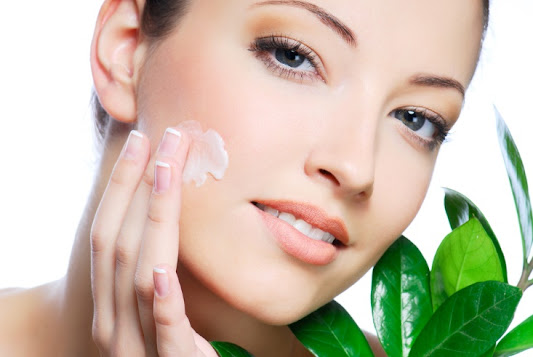 |
| Skin Care Routine 2023 |
As the
largest organ in the body, the skin plays a vital role in protecting the body
against external factors, regulating body temperature, and eliminating toxins.
It is no wonder why having a healthy and glowing skin is a top priority for
many people, especially women. However, with the countless of skincare products
and information available today, creating an effective skincare routine can be
a daunting task, especially for beginners. In this article, we will guide you
through the basics of skincare, providing you with a step-by-step guide to a
healthy and radiant complexion.
Understanding Your Skin Type
The first
step to creating an effective skincare routine is understanding your skin type.
Your skin type is determined by the amount of oil your skin produces, which can
be influenced by genetics, hormones, and external factors such as weather and
diet. There are four main skin types, including oily, dry, combination, and
sensitive skin. Each skin type has specific characteristics and requires a
different approach to skincare.
Oily Skin
If you have
oily skin, you may notice that your skin looks shiny and feels greasy
throughout the day. Oiliness can occur when your skin produces too much natural oil, or sebum. To care for oily skin, you should use products that help to control oil production and reduce the appearance of pores. Look for products that contain salicylic acid, benzoyl peroxide, and retinoids, which can help to regulate oil production and prevent acne.
Dry Skin
On the other hand, if you have dry skin, you may notice that your skin feels tight and flaky. Dry skin is caused by a lack of sebum production, which can lead to dehydration and a weakened skin barrier. To care for dry skin, you should use products that provide hydration and moisture to the skin. Look for products that contain hyaluronic acid, ceramides, and glycerin, which can help to restore the skin's natural moisture barrier.
Combination Skin
Combination skin means that some parts of your face are oily while other parts are dry. Usually, the forehead, nose, and chin (also known as the T-zone) are oily, while the cheeks are dry. To care for combination skin, you should use products that balance oil production and provide hydration to dry areas. Look for products that contain a combination of ingredients such as salicylic acid, hyaluronic acid, and niacinamide, which can help to regulate oil production and provide hydration to dry areas.
Sensitive Skin
If you have sensitive skin, you may notice that your skin reacts easily to products and environmental factors. Sensitive skin can be caused by a weakened skin barrier, allergies, or other underlying conditions. To care for sensitive skin, you should use products that are gentle and free of irritants. When you're buying skincare products, try to find ones that have ingredients like aloe vera, chamomile, or oatmeal. These can help to calm down your skin and make it feel better.
Building Skin Care
Taking care of your skin is more than just using fancy skincare products; it's a lifestyle. A proper skin care routine involves various steps and techniques that should be tailored to your skin type and concerns. By following a consistent routine, you can help your skin maintain its natural moisture, prevent breakouts, and slow down the aging process.
Cleanse
The most important thing to do when taking care of your skin is to clean it properly. Cleansing removes dirt, makeup, and impurities from the skin's surface, allowing it to breathe and absorb other products better. To cleanse properly, choose a gentle, non-comedogenic cleanser that won't strip your skin of its natural oils. Wet your face with lukewarm water and massage the cleanser onto your skin in a circular motion, focusing on your T-zone and any areas prone to breakouts. Make sure to wash off all the soap or water and then gently dab your skin dry with a clean towel.
Exfoliate
Exfoliation means getting rid of dead skin cells that are on the surface of your skin. It helps to improve skin texture, unclog pores, and prevent breakouts. Depending on your skin type, you can choose between physical exfoliants (scrubs) or chemical exfoliants (such as alpha-hydroxy acids or beta-hydroxy acids). However, be mindful not to over-exfoliate, as it can damage your skin's natural barrier. Use an exfoliant once or twice a week after cleansing, and be gentle when applying it to your face.
Tone
Toning is an essential step in a skin care routine that is often overlooked. Toners help to balance your skin's pH levels, remove any remaining dirt or makeup residue, and prepare your skin to absorb other products better. Look for a toner that is alcohol-free and contains ingredients such as witch hazel or rosewater, which have soothing and hydrating properties. Apply the toner to a cotton pad and swipe it gently across your face and neck, avoiding the eye area.
Moisturize
It is important to use moisturizer because it
helps keep your skin healthy, even if you have oily skin. Moisturizers help to
replenish the skin's moisture barrier, prevent dehydration, and protect your
skin from external factors such as pollution and sun damage. Choose a
moisturizer that suits your skin type and contains hydrating ingredients such
as hyaluronic acid, glycerin, or ceramides. Apply the moisturizer in upward
motions, starting from the neck and working your way up to your forehead.
Protect
The final step in any
skin care routine is protection. Applying sunscreen is essential to protect
your skin from harmful UV rays that can cause premature aging, dark spots, and
even skin cancer. Choose a broad-spectrum sunscreen with an SPF of at least 30
and apply it generously to your face and neck, even on cloudy days. Don't
forget to reapply every two hours or after swimming or sweating.

0 Comments